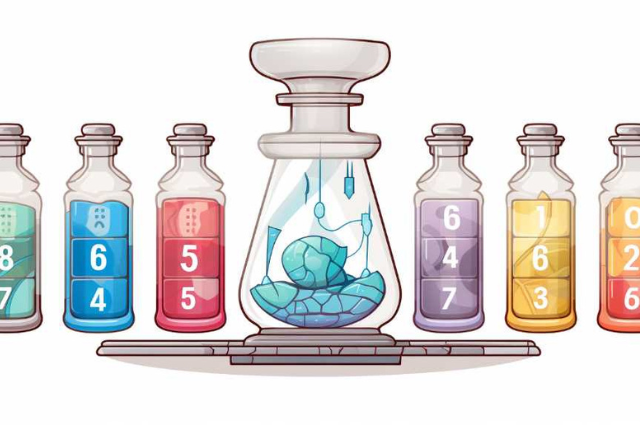6 Essential Tips for Safe Corticosteroids Steroids Use
Corticosteroids, a class of steroids, serve as potent medicines to reduce inflammation and suppress the immune system. While they are beneficial in managing various health conditions, their misuse can lead to serious side effects.
This guide provides six essential tips for the safe use of corticosteroids. It will cover understanding the drug, recognizing potential side effects, guidelines for correct dosage and timing, the significance of medical supervision, management of withdrawal symptoms, making necessary lifestyle adjustments, and potential interactions with other medications.
Implementing these tips can help mitigate risks and maximize the therapeutic benefits of corticosteroids.
Key Takeaways
- Prescribe the lowest effective dose for the shortest duration to mitigate side effects.
- Personalize dosage and timing based on the patient's disease state and overall health.
- Gradually taper corticosteroid use to prevent withdrawal symptoms and disease relapse.
- Monitor and manage potential side effects and complications through medical supervision.
Understanding Corticosteroids
Corticosteroids, a class of steroid hormones, play a pivotal role in a myriad of physiological processes, including the immune response and inflammation control. They are produced naturally in the adrenal cortex of vertebrates, but can also be synthesized in laboratories for medical use, particularly in the treatment of conditions such as arthritis, asthma, and autoimmune diseases.
The therapeutic efficacy of corticosteroids lies in their anti-inflammatory and immunosuppressive properties. They function by binding to the glucocorticoid receptor, a protein inside the cell. This binding triggers a series of intracellular events leading to the transcription of specific genes, which ultimately results in decreased production of inflammatory mediators and suppression of the immune response.
Despite their considerable therapeutic benefits, corticosteroids use must be judicious, as prolonged administration can lead to adverse effects. These may include osteoporosis, suppression of the hypothalamic-pituitary-adrenal axis, cataracts, and increased susceptibility to infections due to the immunosuppressive action.
The pharmacodynamics of corticosteroids is complex and involves numerous factors, including the specific drug used, the dose, the duration of treatment, and individual patient characteristics. Therefore, it's critical for clinicians to have a comprehensive understanding of these factors to optimize treatment outcomes and minimize potential adverse effects.
Recognizing Potential Side Effects
A patient's ability to recognize the potential side effects of corticosteroids use can significantly enhance the safety and efficacy of their treatment regimen. Corticosteroids, while potent anti-inflammatory and immunosuppressive agents, can lead to a spectrum of adverse effects if not properly managed. These side effects can be broadly categorized into two groups: systemic and local.
Systemic side effects, which occur when corticosteroids circulate throughout the body, can include weight gain, osteoporosis, hypertension, diabetes, cataracts, glaucoma, mood swings, and susceptibility to infections. These effects often depend on the dose, duration, and delivery method of the corticosteroid.
Local side effects occur at the site of the corticosteroid application or injection. They may include skin thinning, bruising, discoloration, and the development of small blood vessels. If inhaled, corticosteroids may cause a sore throat, hoarseness, and oral thrush.
Patients should be vigilant for signs of these side effects and report any unusual or concerning symptoms to their healthcare provider promptly. Early recognition and management can prevent the progression of these adverse events and enhance the patient's quality of life.
To mitigate these side effects, healthcare providers should prescribe the lowest effective dose for the shortest possible duration. Additionally, patient education on the correct use of corticosteroids, including adherence to dosing schedules and the importance of regular follow-ups, is crucial.
Proper Dosage and Timing
Understanding a patient's prescribed dosage and the timing of corticosteroid administration is imperative for safe and effective treatment. Corticosteroids, potent anti-inflammatory agents, must be administered judiciously, as misuse can lead to severe physiological complications. The dosage and timing should be personalized, intricately tailored to the patient's disease state, age, weight, and overall health status.
The dosage of corticosteroids is often initiated at a high level to control the inflammatory symptoms, followed by gradual reduction or 'tapering' to maintain the therapeutic benefit while minimizing adverse effects. This process, called steroid tapering, should be meticulously planned and adhered to, to prevent withdrawal symptoms or disease relapse.
Equally crucial is the timing of corticosteroid administration. Corticosteroids, particularly glucocorticoids like prednisone, follow a circadian rhythm in the body, peaking in the early morning hours. Thus, taking the medication in the morning can mimic the body's natural rhythm and minimize disruption to the patient's hormonal balance.
Moreover, the 'single daily dose' or 'alternate day therapy' methods have been shown to reduce side effects. In single daily dosing, the entire daily dose is taken at once, reducing the duration of exposure to the medication. In alternate day therapy, the medicine is taken every other day, allowing the body a 'drug-free' day to recover.
Importance of Medical Supervision
Under the guidance of a healthcare professional, the use of corticosteroids becomes safer and more effective. This is because healthcare professionals have the knowledge and expertise to appropriately administer and monitor the use of these potent drugs. Furthermore, medical supervision can detect and manage potential side effects and complications that may arise during the course of treatment.
Corticosteroids have a wide range of therapeutic applications due to their potent anti-inflammatory and immunosuppressive properties. However, these powerful effects also come with a high potential for adverse reactions. These can range from minor issues such as skin thinning or bruising, to more significant complications like adrenal suppression, osteoporosis, and increased susceptibility to infections.
The key to minimizing these risks lies in the careful management and oversight by healthcare professionals. By monitoring the patient's response to therapy, healthcare professionals can adjust the dosage and duration of treatment to achieve the desired therapeutic effect while minimizing the potential for adverse events. In addition, healthcare professionals can provide advice and guidance on how to manage side effects, should they occur.
In some cases, laboratory tests may be necessary to monitor the body's response to corticosteroids and detect any potential complications. By performing regular check-ups and tests, healthcare professionals can ensure that the use of corticosteroids remains safe and effective.
Handling Withdrawal Symptoms
Transitioning from the vital role of medical supervision in the use of corticosteroids, it becomes pertinent to address the management of withdrawal symptoms that may occur upon cessation of these drugs. Withdrawal symptoms are a result of the body's physiological dependence on the drug, specifically due to the suppression of the hypothalamic-pituitary-adrenal (HPA) axis. It is a clinical challenge that requires a meticulous approach.
The management of withdrawal symptoms from corticosteroids begins with a clear understanding of the symptoms. These can include fatigue, body aches, mood swings, and a noticeable decrease in the ability to cope with stress. In severe cases, a person may experience adrenal crisis, which is a life-threatening condition that necessitates immediate medical attention.
Gradual tapering is the cornerstone of corticosteroid withdrawal management. This method allows the body sufficient time to restore the natural function of the HPA axis. The pace of the taper is contingent on the duration of corticosteroid use, the dosage, and individual physiological factors. It is essential to customize the tapering schedule for each patient, considering their unique health status and symptomatology.
During the withdrawal phase, regular follow-ups and patient education are crucial. Patients must be made aware of the potential withdrawal symptoms and the importance of adhering to the tapering schedule. They should be encouraged to report any severe or worsening symptoms promptly.
Lifestyle Adjustments for Safety
How can one modify their lifestyle to ensure safety while using corticosteroids steroids? This question is of paramount importance for those relying on these potent drugs for managing chronic inflammatory conditions. Safety in corticosteroid use is not merely a matter of correct dosage and administration but also involves making thoughtful lifestyle adjustments.
Firstly, it is crucial to maintain a balanced diet. Corticosteroids can cause weight gain, high blood pressure and elevated blood sugar levels. Thus, a diet low in sodium and sugar, and high in potassium is advisable. Regular consumption of fruits, vegetables, whole grains, and lean proteins can aid in managing these side effects.
Secondly, regular exercise is recommended. This not only helps manage weight gain but also strengthens bones. Corticosteroids can lead to osteoporosis over time, hence weight-bearing exercises like walking or lifting weights are particularly beneficial.
Moreover, limiting alcohol consumption and refraining from smoking are vital. These substances can exacerbate corticosteroid side effects and increase the risk of complications.
Lastly, regular health check-ups are indispensable. Regular monitoring of blood pressure, blood sugar levels, and bone density can help detect potential problems early on. Your healthcare provider can accordingly adjust your treatment plan to mitigate these risks.
Interactions With Other Medications
In addition to a user's lifestyle adjustments, understanding the potential interactions between corticosteroids and other medications is another essential aspect of safe corticosteroid use. Corticosteroids, as potent anti-inflammatory and immunosuppressive agents, can interact with a wide array of other medications, leading to either enhanced or reduced therapeutic effects and potential side effects.
One significant interaction is between corticosteroids and anticoagulants, such as warfarin. Corticosteroids can potentiate the effects of anticoagulants, increasing the risk of bleeding. Thus, monitoring of coagulation parameters and dose adjustment may be necessary.
Likewise, corticosteroids and diuretics can have additive potassium-depleting effects, necessitating regular monitoring of serum potassium levels.
Corticosteroids can also interact with antidiabetic drugs, often necessitating an increase in the dosage of the antidiabetic medication due to the glucose-elevating effect of corticosteroids. Patients on both medications should have regular glucose monitoring.
Certain medications, such as phenytoin, barbiturates, and rifampin can increase the metabolism of corticosteroids, potentially reducing their effectiveness. Conversely, drugs like ketoconazole and erythromycin may inhibit corticosteroid metabolism, leading to increased corticosteroid levels and risk of side effects.
Finally, concurrent use of non-steroidal anti-inflammatory drugs (NSAIDs) and corticosteroids can increase the risk of gastrointestinal ulcers and bleeding. Caution should be exercised, and protective agents may be considered.
Understanding these interactions and managing them appropriately, often in conjunction with a healthcare provider, is vital to ensure the safe and effective use of corticosteroids. Regular monitoring and open discussions can help mitigate potential risks and optimize patient outcomes.
Emergency Situations and Corticosteroids
Recognizing and responding promptly to emergency situations that may arise while on corticosteroids is a critical component of safe use of these potent drugs. These medications, while highly effective in managing a host of medical conditions, can also precipitate certain urgent health scenarios that require immediate action.
- Adrenal Insufficiency: Corticosteroids, particularly when used long-term, can suppress the body's natural production of cortisol - a hormone vital for bodily functions like stress response and inflammation control. Abrupt discontinuation or significant reduction in dosage can trigger adrenal insufficiency, presenting symptoms such as fatigue, weakness, nausea, abdominal pain, and even a life-threatening adrenal crisis.
- Hyperglycemia and Diabetic Ketoacidosis: Corticosteroids can raise blood sugar levels, potentially causing hyperglycemia, especially in patients with diabetes or at risk of diabetes. In severe cases, this can progress to diabetic ketoacidosis, a medical emergency characterized by high sugar and ketone levels in the blood.
- Infections: The immunosuppressive effect of corticosteroids can increase susceptibility to infections, including opportunistic ones. Infections can rapidly progress in these patients, leading to sepsis or other serious complications.
- Psychiatric Effects: Some patients on corticosteroids may experience severe mood swings, anxiety, depression, or even psychotic reactions. These can escalate to crises, necessitating immediate psychiatric intervention.
Frequently Asked Questions
What Are Some Non-Medical Uses of Corticosteroids Steroids?
Non-medical uses of corticosteroids steroids are generally discouraged due to potential health risks. However, they are sometimes misused in sports for their performance-enhancing effects, such as increased muscle mass and reduced inflammation. They may also be used illegally in bodybuilding.
Additionally, corticosteroids have been utilized in animal agriculture to promote growth. It's crucial to note that these uses can lead to serious health consequences and are often legally prohibited.
Are There Natural Alternatives to Corticosteroids Steroids I Can Consider?
Yes, there are natural alternatives to corticosteroids steroids that can be considered.
These include anti-inflammatory foods such as turmeric, ginger, and omega-3 rich foods like fish and walnuts.
Additionally, certain herbs such as Boswellia and bromelain have shown anti-inflammatory properties.
However, these alternatives should not replace prescribed medication without consultation with a healthcare provider, as they may not be as effective in managing severe inflammatory conditions.
How Does Long Term Usage of Corticosteroids Affect My Physical Appearance?
Long-term usage of corticosteroids can cause several changes to your physical appearance. These may include weight gain, particularly around the abdomen and face, resulting in a 'moon face' appearance. Additionally, you may notice thinning of the skin, bruising easily, stretch marks, acne, and excessive hair growth.
These side effects are due to the impact of corticosteroids on the body's hormonal balance and metabolism. Always consult a healthcare professional for personalized advice.
How Can Corticosteroids Steroids Impact My Mental Health?
Corticosteroids can significantly impact mental health. They have potential psychiatric side effects, including mood swings, memory issues, confusion, and serious conditions like depression or mania. While not everyone experiences these effects, they are more common with high doses or prolonged use.
If you're undergoing corticosteroid treatment and notice any changes in your mental status, consult your healthcare provider immediately. It's crucial to manage these effects to maintain optimal mental health while using corticosteroids.
Can Corticosteroids Steroids Affect Fertility or Pregnancy?
Corticosteroids can indeed impact fertility and pregnancy. They may cause menstrual irregularities and a potential delay in conception.
During pregnancy, while generally considered safe, there's a small risk of oral clefts in babies when used in the first trimester. High-dose or long-term use can lead to lower birth weights.
Therefore, it's crucial for women planning pregnancy, or those already pregnant, to discuss corticosteroid use with their healthcare provider.
Conclusion
In conclusion, the safe use of corticosteroids requires a comprehensive understanding of these substances. This includes knowledge of their potential side effects, proper dosage, and timing.
Medical supervision is essential when using corticosteroids. It is important to have a healthcare professional who can provide guidance and monitor your progress.
Careful management of withdrawal symptoms is also necessary. Abruptly stopping corticosteroid use can lead to a range of symptoms, including fatigue, joint pain, and muscle weakness. Gradually tapering off the medication under medical supervision can help minimize these effects.
Lifestyle adjustments are another important aspect of safe corticosteroid use. This may involve making changes to your diet, exercise routine, and stress management techniques to support overall health and minimize potential side effects.
Awareness of interactions with other medications is crucial as well. Some medications can interact with corticosteroids, altering their effectiveness or increasing the risk of side effects. It is important to consult with your healthcare professional about potential drug interactions.
Lastly, understanding emergency situations related to corticosteroid use is vital. For example, individuals on corticosteroids may need to carry a medical alert card or wear a medical bracelet to ensure that healthcare professionals are aware of their medication use in case of an emergency.
By utilizing these tips, individuals can significantly reduce the risks associated with corticosteroid use and enhance the therapeutic benefits of these medications.







